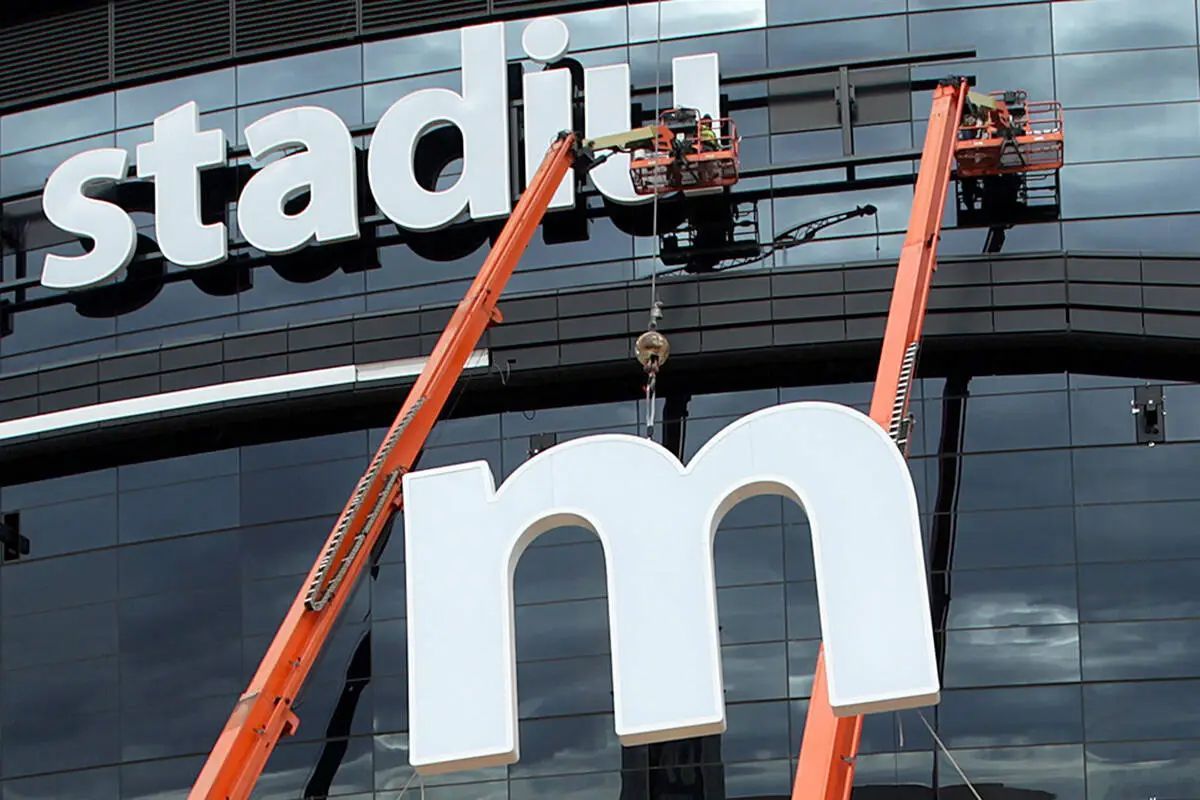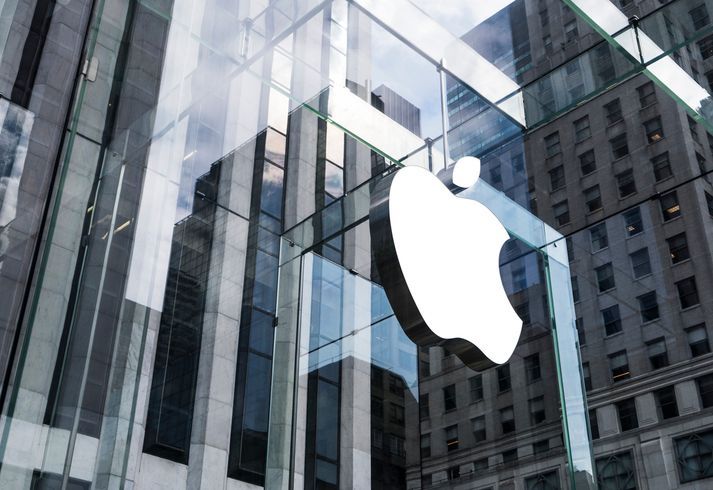HUMANIZE TECH
Give your tech brand a soul.
Welcome to Humanize Tech, the resource hub for technology leaders who grasp the strategic importance of branding.
Any tech brand can perform better if it connects with people on an emotional level. If it communicates meaning, not just features. If it's human. This is the place to find the tools, tips, and resources you need to craft stories that humanize your tech brand. Enjoy.

Brand transformation is more than linguistic gymnastics — it's a multidimensional shift that requires both visual and verbal integration to be fully understood and executed. As branding professionals, we often find ourselves at the intersection of words and imagery, negotiating the complex relationship between what is said and what is seen. Beyond Words: The Dual Nature of Brand Understanding When we consider how brands evolve and transform, we must acknowledge that positioning and messaging alone cannot capture the full essence of a rebrand. That's because a brand also lives in the visual impact of its logo, the emotional response to its color palette, the tactile experience of its products, and the psychological associations formed through consistent imagery. These elements create meaning in ways that transcend verbal explanation. This integrated nature of brand understanding presents both challenges and opportunities for brand strategists and agencies. Those who rely solely on brand messaging frameworks often miss the deeper, more intuitive connections that visual elements forge with audiences. Conversely, those who neglect verbal precision may create beautiful but meaningless brand experiences. The Strategist's Dilemma This reality creates a fascinating paradox for brand strategists. On one hand, it's a blessing — those who master the integration of visual and verbal thinking possess a competitive advantage that purely analytical thinkers cannot match. They can navigate the subtleties of brand transformation with a more complete toolkit, sensing shifts in cultural meaning that might be invisible to others. On the other hand, it presents a curse — how do we communicate about something that partially exists beyond the realm of words? How do we justify decisions that are partly intuitive? How do we demonstrate value when some of the most important aspects of our work resist straightforward measurement or explanation? Embracing Integrated Thinking The most successful brand transformations occur when strategists embrace both modes of thinking: Understanding the rational and emotional components of brand perception Recognizing when to prioritize visual impact over verbal explanation (and vice versa) Developing frameworks that respect both analytical rigor and creative intuition Communicating in ways that engage both logical and visual processing Moving Forward As the branding landscape continues to evolve, the integration of visual and verbal thinking becomes not just advantageous but essential. The brands that resonate most deeply with audiences are those that achieve coherence across all dimensions of experience. By acknowledging the limitations of purely linguistic approaches and embracing the full spectrum of how meaning is created, brand strategists can navigate transformation more effectively—even if they sometimes struggle to put into words exactly why something works. The Speak! Approach: Integration in Action At Speak!, we've built our entire agency model around the principle that visual identity and messaging strategy must be conceived and developed in concert — never in isolation. This integrated approach isn't just a philosophical stance; it's the foundation of our process and the key to our success in transforming brands. Rather than having verbal and visual specialists only intersect when work is handed off, we are cross-disciplinary teams where messaging strategists and visual designers work side by side from day one. Our brand strategy function (that's me) leads stakeholder interviews and workshops but our art director is always on the call and not just as a passive listener. Engaged. Asking hard questions. Poking holes. This ensures that every strategic decision considers both dimensions simultaneously. The benefits of our integrated approach are evident in the results we deliver: Greater Coherence : When messaging and visuals grow from the same strategic foundation, they naturally reinforce each other, creating a brand experience that feels seamless and purposeful. Deeper Resonance : Brands that speak to both the rational mind (through clear messaging) and the intuitive mind (through visual impact) create more powerful and lasting impressions with audiences. Faster Alignment : Our clients spend less time reconciling conflicting approaches from different specialists and more time refining a unified strategic direction. Unexpected Solutions : The creative tension between verbal and visual thinking often leads to breakthrough ideas that neither approach would have discovered independently. Our clients often tell us that this integrated process not only delivers superior results but also provides them with a new lens through which to understand their own brands. By experiencing the power of visual-verbal synergy in action, they gain insights that transform not just their brand assets but their entire approach to brand management.

For tech startups, creating a Minimum Viable Product (MVP) — the stripped-down version of your product that allows you to test core assumptions with real users — is a common approach to product development. But what about your brand? Enter the Minimum Viable Brand (MVB): the essential elements needed to present your company professionally and connect with early customers, without over-investing in elaborate brand development.

Let's cut to the chase: In a world drowning in digital noise and AI-generated content, brand authenticity isn't just a nice-to-have — it's your survival kit. Today's tech-savvy customers can smell manufactured messaging from ten browser tabs away, and they're not afraid to hit "unfollow" faster than you can say "corporate values." The Power of Brand Truth Here's the deal: brand authenticity means getting real about who you are as an organization. We're not talking about your product specs or your tech stack — we're talking about the raw, honest truth of why you exist and what drives your team to show up every day. Your brand truth might be buried in your startup story, your unique approach to solving gnarly problems, or the way you're fundamentally changing how your customers work and live. Take Microsoft's transformation under Satya Nadella. When he took the reins in 2014, he didn't just pivot the company's technology — he unleashed its authentic truth as an enabler of human achievement. This wasn't some slick marketing play; it was a fundamental shift from "Windows first" to "empower every person and organization on the planet to achieve more." The result? Microsoft's stock price soared over 600% since 2014, and they've become one of the most valuable companies in the world. Why Truth Matters More Than Ever The numbers don't lie: According to Stackla, 88% of consumers say authenticity is crucial when deciding which brands to support. Even more telling? A recent Edelman study found that 81% of consumers need to trust a brand before they'll even consider buying from them. In an age where every startup claims to be "disrupting" something, customers are developing highly sophisticated BS detectors. They're not just looking at your product dashboard — they're scrutinizing your GitHub contributions, reading your engineering blog posts, and watching how you handle service outages on Twitter. Uncovering Your Brand's Truth Finding your brand's authentic truth requires serious introspection. Ask yourself: What technical problem made you angry enough to start this company? What conventional wisdom in your industry are you willing to challenge? What keeps showing up in your customer success stories? What principles would you defend even if they slowed down your growth? Sometimes your truth is hiding in plain sight. Look at Twilio. Their brand truth isn't about APIs — it's about democratizing complex communications technology. This core truth drives everything from their developer-first approach to their acquisition strategy. Expressing Truth Through Story Once you've nailed your brand truth, you need to tell its story in a way that clicks with your audience. And no, we're not talking about another "Our Journey" blog post. Consider how Stripe tells its story. Their truth isn't about payment processing — it's about increasing the GDP of the internet. This bigger narrative has turned what could have been dry technical documentation into a compelling story about empowering entrepreneurs worldwide. Their transparency about their engineering challenges and public infrastructure investments has built unprecedented trust in the developer community. Building Trust Through Consistency Real talk: authenticity means walking the walk. When Zoom faced security criticisms in 2020, CEO Eric Yuan didn't hide behind PR speak. He admitted the problems, implemented a 90-day feature freeze to focus on security, and hosted weekly webinars to address concerns. This transparent approach turned a potential crisis into a trust-building opportunity. The data backs this up: According to PwC, 71% of consumers say they'll lose trust in a brand if they perceive it's putting profit over people. And once that trust is gone, 46% say they'll stop buying from the company altogether. The Bottom Line In the tech world, where every other company claims to be "revolutionary" or "game-changing," authentic brand truth is your secret weapon. It's not about crafting the perfect message—it's about having the courage to be genuinely, consistently, unapologetically you. The next generation of successful tech brands won't win because they had the most sophisticated tech stack or the biggest AWS budget. They'll win because they dared to be real in an increasingly artificial world. In an industry obsessed with automation and scalability, never forget that authenticity is the one thing you can't fake. Remember: Your brand truth is like your source code — you don't write it from scratch, you refactor and optimize what's already there. When you commit to pushing authentic commits to your brand repository, you're not just building a better story — you're compiling a more resilient business that resonates with users on a fundamental level.

Jaguar’s recent rebrand has stirred up quite a debate among branding experts, car enthusiasts, and anyone paying attention to the automotive industry. It’s not every day that a legacy brand with nearly a century of heritage makes such a dramatic pivot. And dramatic is the right word for what Jaguar has done: the brand has chosen to shift entirely toward an electric future, leaving behind not only its combustion engines but also its loyal (and dwindling) audience. On the surface, this move is bold, visionary, and forward-looking. But the execution of the rebrand, in my view, misses a critical mark.

The world is politicized and polarized. For brand leaders, it's vitally important to understand what your brand stands for. Brand values have evolved from being a simple set of guiding principles to becoming a critical touchstone for companies. The stakes are high — how a brand communicates its values can either build loyalty or alienate its audience. In this climate, crafting and authentically living by brand values is not only important for internal alignment but also for maintaining credibility and trust in the eyes of consumers. Why Brand Values Matter At their core, brand values define what a company stands for. They influence decisions, shape culture, and guide interactions with customers, employees, and stakeholders. But in a world where social and political issues dominate public discourse, brand values have taken on an additional role. Brands are now expected to engage in these conversations, whether they want to or not. According to an article from the Forbes Business Council , companies today walk a tightrope when it comes to brand messaging in a polarized world. The article highlights that consumers are increasingly looking for brands that are aligned with their personal values. In fact, 82% of consumers say they prefer to buy from companies that stand for a cause that resonates with them. However, as the Forbes article points out, missteps or inauthentic attempts at value-driven messaging can quickly backfire, leading to a loss of trust or even public backlash . Authenticity is Key Authenticity is the linchpin of successful brand values. It’s not enough to have a set of statements written on your website or splashed across marketing materials. Consumers are savvy and can easily discern whether a brand truly embodies its values or if it’s simply engaging in "values-washing." The Forbes article discusses how brands need to “walk the tightrope” of being true to their values while navigating divisive topics. One way to ensure authenticity is by embedding these values into every aspect of the business — from employee behavior and corporate policies to product development and customer service. When brand values are fully integrated, they become a natural extension of the company’s actions, making it easier for consumers to trust the brand. The Role of Consistency Consistency is another critical factor. If a brand claims to value sustainability, for instance, but engages in environmentally harmful practices, it risks alienating its audience. A recent example of a company successfully aligning its values with actions is Patagonia, which has consistently communicated its commitment to environmental causes and has taken concrete steps to support that commitment. Their values are not just words — they are reflected in everything from their supply chain to their corporate giving programs. In contrast, brands that flip-flop or shy away from taking a stand often lose credibility. Consumers, especially younger generations like Millennials and Gen Z, have come to expect consistency between what a brand says and what it does. This expectation extends beyond the products they buy—it influences where they work, the communities they engage in, and the brands they advocate for. Navigating the Challenges of Polarization The increasing polarization of society presents brands with unique challenges. Brands must be strategic in their messaging, knowing that any statement they make could be perceived as taking a side. This can be especially risky for companies trying to appeal to a broad audience. However, silence is often interpreted as complicity, making it difficult for brands to remain neutral on issues that matter to their customers. The Forbes article mentions that “neutrality is often a choice” that can backfire. By taking a stand, brands can foster deeper connections with their audience, even if it means alienating some customers. The key is to be thoughtful and intentional. Brands must weigh the risks and rewards of speaking out, but those that do so authentically and consistently are more likely to retain loyal customers who align with their values. The Long-Term Payoff Ultimately, brands that commit to authentic, lived values will fare better in the long run. These brands will not only attract customers who share their values but also build a sense of purpose and loyalty that transcends individual transactions. In a world where trust is increasingly fragile, and consumer choice is plentiful, having a strong, authentic set of brand values can be the differentiator that sets a company apart. In conclusion, brand values have never been more important, especially in our current polarized climate. But for these values to have an impact, they must be genuine, consistently applied, and aligned with the company’s actions. By staying true to its core principles, a brand can foster trust, build a loyal customer base, and create lasting connections in an ever-changing world. Need help identifying and crafting brand values that set the tone for your brand, give us a shout . --- Walking the Tightrope: Brand Messaging in a Polarized World* (Forbes Business Council, 2024).

In high-tech markets, consumer preferences and market trends evolve rapidly. As a result, companies must remain vigilant about their brand’s relevance and resonance. One way to maintain or enhance brand appeal is through strategic brand modifications. However, the terms "rebrand" and "brand refresh" are often used interchangeably, leading to confusion. Understanding the distinction between these two concepts is crucial for making informed decisions that align with your business goals. What is a Rebrand? A rebrand is a comprehensive transformation of a company's identity. This process involves altering foundational elements such as the company name, logo, visual design, brand messaging, and sometimes even the core values and mission statement. Rebranding is typically undertaken for profound reasons, such as: Market Shifts: When market dynamics change significantly, a rebrand may be necessary to stay competitive. For instance, a company that started in one industry but has pivoted to another may need a rebrand to reflect its new direction. Mergers and Acquisitions: When companies merge or one acquires another, a rebrand can help create a unified identity that represents the new entity. Negative Public Perception: If a brand has suffered from a tarnished reputation, a rebrand can help distance it from past issues and project a fresh image. Global Expansion: Entering new markets with different cultural nuances may require a brand to rebrand to ensure cultural relevance and avoid misunderstandings. Examples of Rebranding One notable example is Google, which rebranded its corporate structure to Alphabet Inc. in 2015. This rebrand was a strategic move to separate its core search engine business from its other ventures and to signal its expansion into various industries, such as biotechnology and autonomous vehicles. Another example is IBM’s transformation from a hardware-centric company to a leader in cloud computing and AI. In the 1990s, IBM shifted its focus from hardware to software and services, rebranding itself as a technology consulting company to better align with market trends and customer needs. What is a Brand Refresh? A brand refresh, on the other hand, is a subtler update to an existing brand. It involves refining and modernizing elements of the brand to keep it current and appealing, without overhauling its core identity. Brand refreshes are undertaken for reasons such as: Staying Current: As design trends evolve, a brand refresh ensures that the company’s visual and messaging elements remain contemporary. Enhanced Relevance: Minor tweaks in brand positioning or messaging can help maintain relevance with the target audience. Expanded Offerings: When a company expands its product or service lines, a refresh can help incorporate these new elements into the existing brand framework. Examples of Brand Refreshes Microsoft’s refresh of its Windows logo in 2012 is a prime example. The update modernized the logo’s design, transitioning from the colorful, wavy flag to a more minimalist and flat design, aligning with the then-new Metro design language introduced with Windows 8. Another example is Intel’s brand refresh in 2020. While retaining its iconic blue color, Intel introduced a new logo and visual identity to reflect its evolution and innovations in areas like AI, 5G, and edge computing, ensuring the brand remained relevant in the rapidly changing tech landscape. Key Differences Between a Rebrand and a Brand Refresh Understanding the distinction between a rebrand and a brand refresh involves recognizing the scope, purpose, and impact of each process. Scope Rebrand: A rebrand is comprehensive, encompassing all aspects of the brand, from visual identity to core messaging and sometimes even the company’s name. It’s a top-to-bottom overhaul aimed at repositioning the company entirely. Brand Refresh: A brand refresh is more focused and limited in scope. It typically involves updating specific elements like the logo, color palette, typography, or tagline, while keeping the overall brand essence intact. Purpose Rebrand: The purpose of a rebrand is to signify a fundamental shift in the company’s direction, market positioning, or identity. It’s often a response to significant internal or external changes. Brand Refresh: The purpose of a brand refresh is to keep the brand vibrant and relevant. It’s about making necessary adjustments to stay in tune with evolving trends and consumer preferences. Impact Rebrand: The impact of a rebrand is profound, affecting all stakeholders, from employees to customers and investors. It requires extensive communication and often involves re-educating the market about the new brand identity. Brand Refresh: The impact of a brand refresh is more subtle but still significant. It helps reinforce the brand’s relevance and appeal without causing confusion among existing customers. When to Choose a Rebrand vs. a Brand Refresh Deciding between a rebrand and a brand refresh depends on the specific circumstances and objectives of your business. Choose a Rebrand If: Your brand no longer reflects your company’s values, vision, or market position. You’re undergoing significant changes such as mergers, acquisitions, or entering new markets. You need to distance your brand from negative perceptions or past controversies. Choose a Brand Refresh If: Your brand needs a visual or messaging update to stay current and appealing. You’re expanding your product or service offerings and need to reflect these changes. You want to enhance your brand’s relevance without overhauling its core identity. Both rebranding and brand refreshes are powerful tools for maintaining and enhancing your brand’s appeal. While a rebrand involves a complete transformation to signal significant changes, a brand refresh focuses on modernizing and fine-tuning the existing brand. By understanding the differences and carefully considering your business objectives, you can choose the right approach to ensure your brand remains strong, relevant, and resonant.

Brand messaging is a central component of every B2B technology brand’s strategy. It's the basis for how effectively you can articulate who you are, why your company exists and why your customers should care. The right messaging and positioning in the right place for your customers is the perfect equation for grabbing their attention. Messaging for B2B technology brands can be difficult to nail. Many tech firms lack the internal resources and time to dive deep into their messaging. Others are forced to focus all their resources entirely on product attributes and improving technology. The list can go on and on. Refining your B2B brands story is no small feat either. We know, because we've helped over 25 tech brands update and refine their brand stories over the last 7 years. We understand that your head is jumbled with everything you want to say, but you freeze when the need to put pen to paper arises. That's why we wrote, "How to Win on Messaging: A Guide for B2B Technology Companies."










